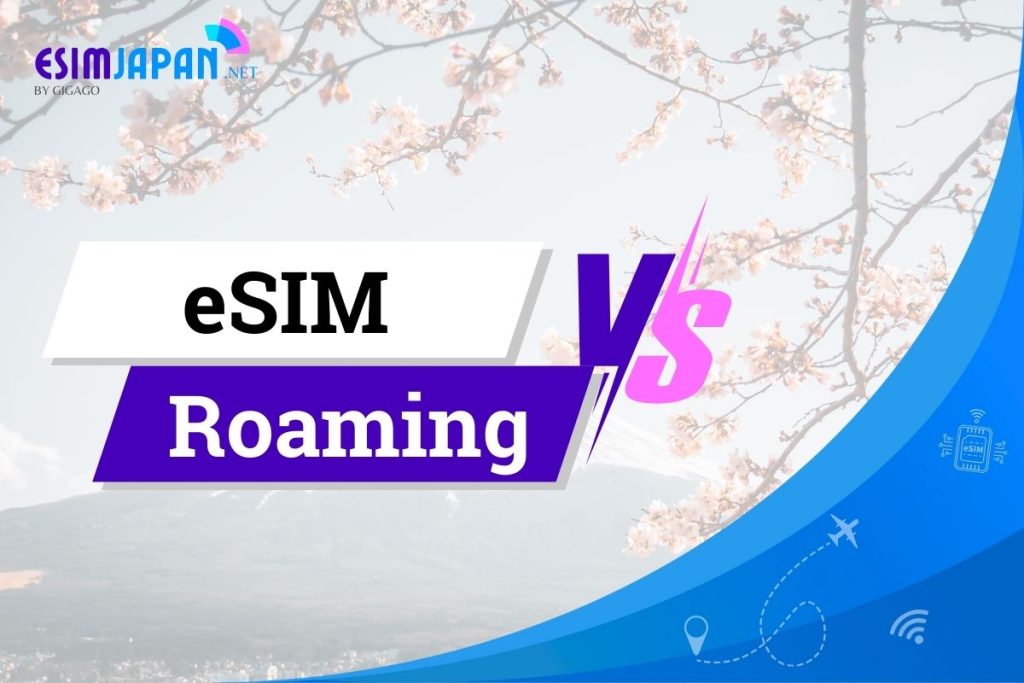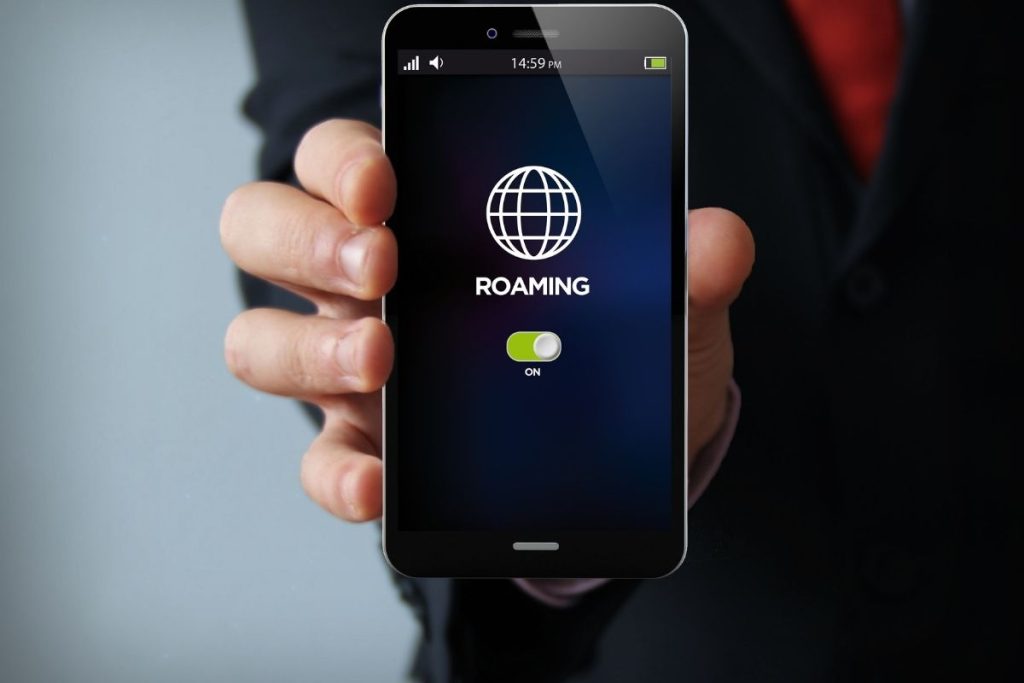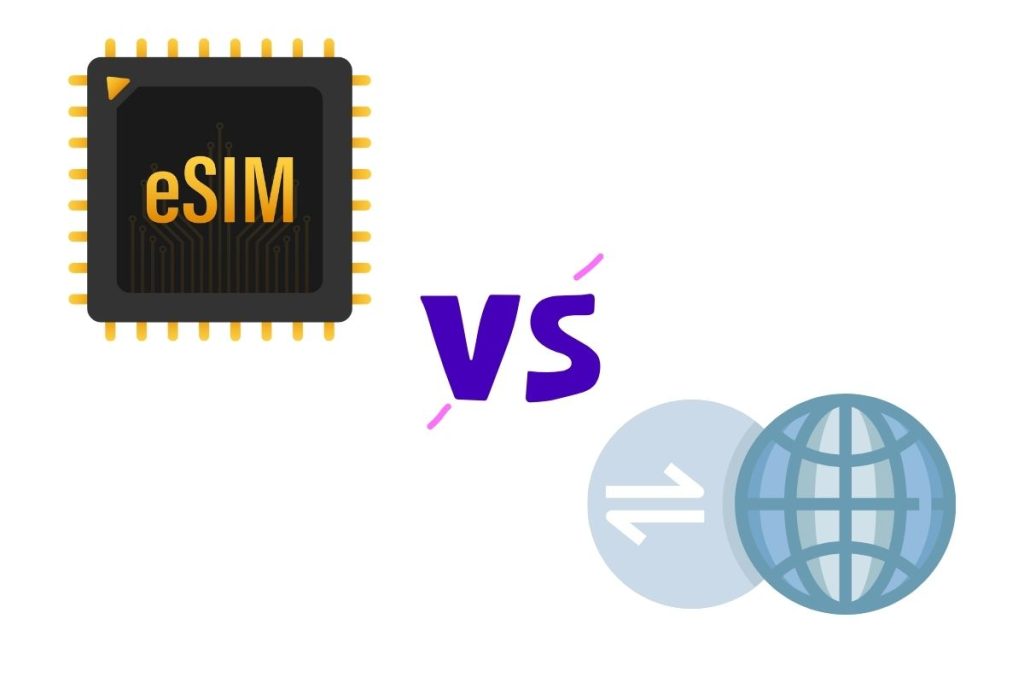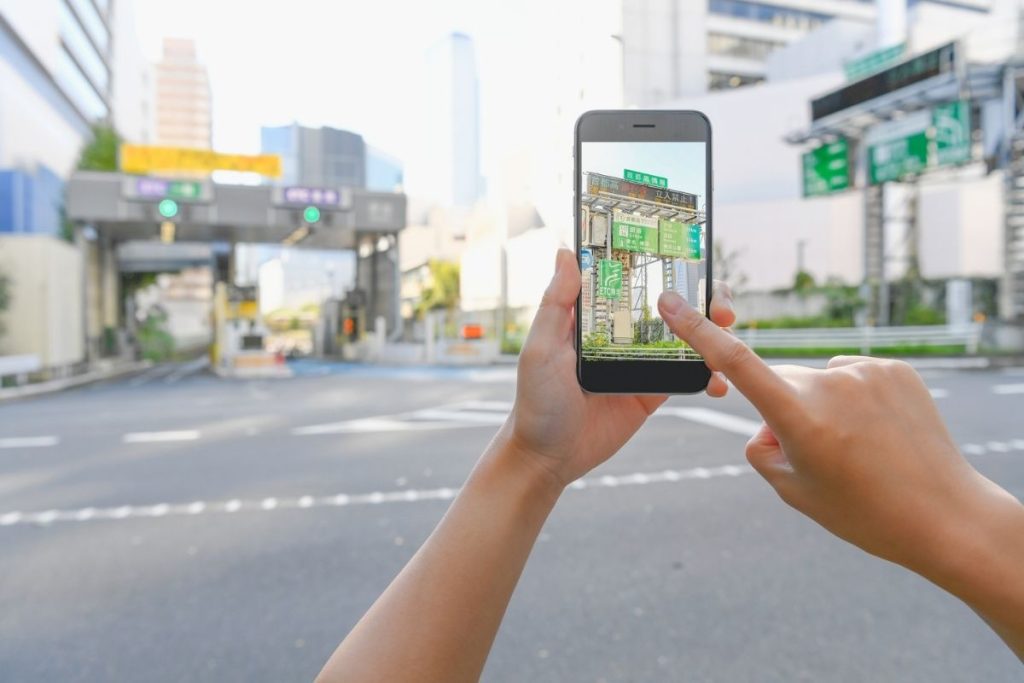
Planning your trip to Japan in 2025 and wondering about the best way to stay connected? You’re not alone. With Japan expecting to welcome over 40 million international visitors in 2025, choosing the right internet solution has never been more crucial. This comprehensive guide will help you understand the key differences between eSIM technology and traditional roaming, helping you make an informed decision that could save you hundreds of dollars while ensuring seamless connectivity throughout your Japanese adventure.
Understanding eSIM vs Roaming
What is eSIM Technology?
An eSIM (embedded SIM) is a revolutionary digital alternative to traditional physical SIM cards. Built directly into modern smartphones, eSIMs allow you to activate mobile plans remotely without handling any physical hardware. Instead of visiting stores or swapping SIM cards, travelers can simply scan a QR code or use a mobile app to connect to Japanese cellular networks instantly upon arrival.
Key benefits of eSIM technology include:
- Instant activation: Connect to Japanese networks within minutes of landing
- No physical handling: Eliminates the risk of losing or damaging traditional SIM cards
- Multiple profile storage: Store several carrier profiles on a single device
- Eco-friendly: Reduces plastic waste from traditional SIM card packaging
- Enhanced security: Digital profiles are more secure than physical cards
Device compatibility for eSIMs has surged dramatically in 2025:
- Apple iPhones: 90% of models now support eSIM (iPhone XS and newer)
- Samsung Galaxy: 80% compatibility rate across flagship and mid-range devices
- Google Pixel: 80% of current models support eSIM technology
- Overall smartphone compatibility: Nearly 70% of smartphones worldwide now support eSIM
Roaming in Japan

Traditional roaming allows your home mobile provider to connect with Japanese network partners when you travel. While this sounds convenient, it often involves complex international agreements, limited flexibility, and significantly higher costs. Most roaming plans charge daily fees ranging from $10-12 per day, with additional charges for exceeding data allowances.
Common roaming challenges in Japan include:
- High daily fees: Average $10-12 per day regardless of usage
- Speed limitations: Many roaming plans throttle speeds to 128 kbps after initial allowances
- Unexpected charges: Additional fees for exceeding data limits or international calls
- Limited coverage: Roaming may not provide access to all Japanese network infrastructure
- Poor customer service: Time zone differences complicate support when issues arise
2025 Statistics: Why eSIM is Gaining Momentum
Device Compatibility Surge
The eSIM revolution is accelerating rapidly in 2025. Recent market analysis reveals that over 118 million smartphones globally now support eSIM technology, representing a 69% compatibility rate across all smartphone models. This dramatic increase means most travelers visiting Japan can leverage eSIM benefits without purchasing new devices.
Apple leads the compatibility charge:
- All iPhone models from XS (2018) onwards support eSIM
- iPhone 14 and 15 series sold in the US are eSIM-only devices
- iPad models from 7th generation onwards include eSIM functionality
Android manufacturers are rapidly catching up:
- Samsung Galaxy S22, S23, S24, and S25 series all support eSIM
- Google Pixel devices from Pixel 3 onwards are eSIM-ready
- Major brands including Huawei, Motorola, and Sony now offer eSIM models
Japan Tourism Growth Impact
Japan’s tourism boom is creating unprecedented demand for reliable, affordable connectivity solutions. Official statistics reveal that Japan welcomed over 21.5 million international visitors in the first half of 2025 alone, representing a 21% increase compared to 2024. The Japan National Tourism Organization projects that total 2025 arrivals will exceed 40 million visitors, making this a record-breaking year for Japanese tourism.
Key market drivers include:
- World Expo 2025 in Osaka attracting global attention
- Weakened yen providing enhanced purchasing power for international visitors
- Relaxed travel restrictions encouraging pent-up demand
- Japan’s recognition as the world’s most favorite travel destination
Tourist demographics reveal interesting patterns:
- Chinese visitors lead with 797,900 arrivals in June 2025 alone
- South Korean tourists follow closely with 729,800 monthly visitors
- US and Canadian markets reached record highs for single-month arrivals
- Young solo travelers (aged 18-28) represent over 70% of budget tour participants
This massive influx of tech-savvy international visitors is driving demand for convenient, cost-effective connectivity solutions that eSIMs perfectly address.
Cost Comparison: eSIM vs Roaming

Daily Cost Analysis
The financial advantages of choosing eSIM over roaming become immediately apparent when comparing daily costs. Traditional roaming plans from major carriers typically charge $10-12 per day, regardless of actual usage. In contrast, eSIM plans offer significantly more value with flexible pricing based on data needs rather than time periods.
Daily cost comparison:
| Duration | eSIM Cost (USD) | Roaming Cost (USD) | Savings with eSIM | Percentage Savings |
| 1 Day | $5 | $12 | $7 | 58.3% |
| 3 Days | $12 | $36 | $24 | 66.7% |
| 7 Days | $25 | $84 | $59 | 70.2% |
| 14 Days | $45 | $168 | $123 | 73.2% |
| 30 Days | $70 | $360 | $290 | 80.6% |
eSIM pricing examples:
- Short-term plans (1-6 days): $3-19 for 1-10GB of data
- Weekly plans: $17-25 for 10-20GB typically sufficient for most travelers
- Extended stays: $30-70 for 30-day plans with 50-100GB allowances
Check out details on Japan eSIM plans:
Weekly and Extended Stay Comparisons
For travelers planning longer stays in Japan, the cost advantages of eSIMs become even more pronounced. A typical week-long trip using roaming could cost $70-84 just for basic connectivity, while comprehensive eSIM plans with generous data allowances start at just $25.
Extended stay cost analysis:
- Two-week trips: Roaming costs reach $140-168, while eSIMs provide 30-50GB for $30-45
- Month-long stays: Roaming expenses can exceed $300-360, compared to unlimited eSIM plans at $50-70
- Business travelers: Extended roaming charges often breach corporate travel budgets, while eSIMs offer predictable, reasonable costs
Hidden Costs
Roaming plans frequently include hidden charges that can dramatically increase total costs beyond advertised daily rates. These unexpected expenses often catch travelers off-guard, leading to bill shock upon returning home.
Common hidden roaming costs include:
- Overage charges: $2.05 per MB when exceeding plan allowances
- Voice call premiums: $1.79-3.00 per minute for outgoing calls
- Text message fees: $0.50-1.30 per message, including multimedia content
- International call charges: Premium rates for calling home or local Japanese numbers
- Device insurance: Additional daily fees for protecting rental equipment
eSIM transparency advantages:
- Fixed pricing: Clear, upfront costs with no surprise charges
- Data-only focus: Most eSIMs are data-only, encouraging use of VoIP services like WhatsApp
- No device risks: Digital nature eliminates loss, damage, or theft concerns
- Flexible top-ups: Easy to add more data if needed, typically at reasonable rates
Takeaway: Choose eSIM for minimizing risk on hidden fees!
Performance and Coverage Analysis
Network Quality and Speed
Japan’s mobile network infrastructure ranks among the world’s best, with all major carriers providing excellent coverage and high-speed connectivity. However, the network experience can vary significantly between eSIM providers and roaming arrangements.
Japan’s major networks performance (2025 data):
- NTT Docomo: Leads coverage experience with 99.7% availability nationwide
- au (KDDI): Excellent reliability with strong 5G coverage in urban areas
- SoftBank: Fourth in coverage but leading 5G availability nationwide
- Rakuten Mobile: Growing network with competitive upload speeds and expanding coverage
eSIM network advantages:
- Direct connectivity: Local eSIMs connect directly to Japanese networks without routing through international gateways
- Priority access: Local eSIM users often receive higher network priority than roaming visitors
- 5G access: Many eSIM plans include full 5G capabilities where available
- Speed consistency: Average speeds of 50-400+ Mbps depending on location and network
Roaming network limitations:
- Speed throttling: Many roaming plans limit speeds to 128 kbps after initial allowances
- International routing: Data may route through foreign servers, increasing latency
- Lower priority: Roaming users typically receive lower network priority during peak periods
- Coverage gaps: Limited access to all network infrastructure compared to local plans
Coverage Reliability
Japan’s mountainous terrain and dense urban environments create unique connectivity challenges that different solutions handle with varying degrees of success. Understanding coverage patterns helps travelers choose the most reliable option for their specific itinerary.
National coverage statistics:
- 4G coverage: 96.47% nationwide according to 2025 estimates
- 3G coverage: 99.90% providing backup connectivity in remote areas
- Urban areas: Near-perfect coverage in Tokyo, Osaka, and major cities
- Rural regions: Variable coverage depending on carrier and specific location
eSIM coverage advantages:
- Carrier flexibility: Choose providers using networks with best coverage for your route
- Multiple profiles: Switch between carriers if coverage issues arise
- Local optimization: Japan-focused eSIMs prioritize domestic network performance
- Real-time monitoring: Apps often provide coverage maps and signal strength indicators
Convenience Factor: Setup and Usage
eSIM Setup Advantages
The convenience factor often proves decisive when choosing between eSIM and roaming options. eSIMs eliminate numerous friction points that traditional connectivity solutions impose on travelers.
Pre-trip preparation benefits:
- Online purchase: Complete setup before departure from home comfort
- Instant delivery: QR codes delivered via email within minutes
- Compatibility verification: Easy online tools confirm device support
- Plan comparison: Compare multiple providers and plans without time pressure
Arrival day advantages:
- Immediate activation: Connect within minutes of landing using airport WiFi
- No queues: Avoid airport kiosks, rental counters, and service delays
- Language independence: Setup requires minimal Japanese language skills
- Multiple device support: Some plans allow hotspot sharing with companions
Setup process simplicity:
- Purchase online: Select plan and complete payment before travel
- Receive QR code: Activation instructions sent to email immediately
- Install on arrival: Scan QR code using device camera when in Japan
- Activate instantly: Begin using data within 2-3 minutes of installation
Roaming Limitations
Traditional roaming arrangements impose several practical limitations that can complicate travel experiences and create frustration at crucial moments.
Pre-departure complications:
- Carrier contact required: Must call or visit carrier stores to activate international plans
- Plan restrictions: Limited options often unsuitable for specific travel needs
- Credit checks: Some carriers require additional verification for international usage
- Device compatibility: Carrier-locked phones may not work properly abroad
On-arrival challenges:
- Automatic activation: Roaming activates automatically, potentially creating unexpected charges
- Speed variability: Connection quality depends on carrier agreements and local network partnerships
- Support difficulties: Time zone differences complicate troubleshooting when issues arise
- Bill shock potential: Charges accumulate in background without clear usage visibility
Data Usage Recommendations for Japan Travel

Typical Usage Patterns
Understanding your data consumption patterns helps determine the most suitable and cost-effective connectivity solution for your Japan trip. Travel data usage often exceeds normal patterns due to increased navigation, photography, and social media sharing.
Light users (0.5-1GB daily):
- Activities: Basic navigation with Google Maps, messaging via WhatsApp, occasional social media browsing
- Recommended eSIM: 10-20GB monthly plans for $15-25
- Typical travelers: Budget tourists, older adults, short city visits
Moderate users (1-3GB daily):
- Activities: Regular photo sharing, video calls home, moderate streaming, translation apps, restaurant searches
- Recommended eSIM: 30-50GB monthly plans for $30-45
- Typical travelers: Standard tourists, family groups, week-long trips
Heavy users (3-5GB+ daily):
- Activities: Video streaming, frequent video calls, heavy social media usage, work-related activities, mobile hotspot sharing
- Recommended eSIM: Unlimited monthly plans for $50-70
- Typical travelers: Digital nomads, extended stays, content creators, business travelers
Trip Duration Calculations
Matching your data plan to trip duration prevents overpaying for unused allowances while ensuring adequate coverage throughout your stay.
Short trips (3-7 days):
- Total needs: 5-20GB depending on usage intensity
- Cost-effective choice: Fixed data eSIM plans matching trip length
- Backup strategy: Top-up options available if needed
Medium trips (1-2 weeks):
- Total needs: 15-50GB for most travelers
- Optimal choice: Monthly eSIM plans with generous allowances
- Flexibility: Unused data doesn’t expire, providing peace of mind
Extended stays (3+ weeks):
- Total needs: 40GB+ for typical usage patterns
- Best value: Unlimited or high-capacity eSIM plans
- Business consideration: Predictable costs for expense reporting
When to Choose eSIM vs When to Choose Roaming
Choose eSIM when:
- Cost-conscious travel: Seeking maximum value for connectivity spending
- Tech-comfortable users: Comfortable with digital setup processes
- Unlocked devices: Your smartphone isn’t carrier-locked
- Extended stays: Visiting Japan for more than 3-4 days
- High data needs: Planning significant internet usage for work or entertainment
- Multiple trips: Traveling to Japan or other countries frequently
Consider roaming when:
- Ultra-short visits: 1-2 day business trips where cost isn’t primary concern
- Locked devices: Carrier-locked phones that may not accept eSIMs
- Minimal tech comfort: Prefer traditional solutions without digital setup
- Corporate expense accounts: Company policies favor familiar roaming charges
- Emergency backup: As secondary option alongside primary connectivity solution
Hybrid approach benefits:
Many experienced travelers use both solutions strategically:
- eSIM as primary: Handle majority of data needs cost-effectively
- Roaming as backup: Keep activated for emergency situations or important calls
- Device splitting: Use eSIM on primary phone, roaming on backup device
Best eSIM Options for Japan Travelers in 2025
When it comes to reliable, cost-effective eSIM solutions for Japan travel in 2025, esimjapan.net stands out as the premier choice for international visitors seeking seamless connectivity throughout their Japanese adventure.
Choose the best eSIM plans from esimjapan.net!
Why esimjapan.net leads the market:
Specialized Japan Expertise – Unlike generic global eSIM providers, esimjapan.net focuses exclusively on optimizing connectivity for Japan travelers. This specialization translates into superior network partnerships, better local coverage, and plans specifically designed around Japanese tourism patterns.
Premium Network Access – Direct partnerships with Japan’s leading mobile networks ensure you receive priority access to high-speed data without the limitations often imposed on international roaming users. Experience true local network performance with speeds reaching 50-400+ Mbps in urban areas.
Tourist-Centric Plan Design – Plans are crafted specifically for international visitors, with data allowances that match typical travel usage patterns. Whether you need basic connectivity for navigation and messaging or unlimited data for content creation and video streaming, esimjapan.net offers the perfect solution.
Transparent, Competitive Pricing – Clear upfront pricing with no hidden fees, overage charges, or surprise billing. Compare costs easily and choose plans that fit your exact trip duration and data needs without paying for unused services.
English Language Support – Comprehensive customer support available in English during convenient hours for international travelers. Get assistance with setup, troubleshooting, or plan modifications without language barriers.
Instant Digital Delivery – Purchase your eSIM plan online and receive activation instructions via email within minutes. No waiting, no physical shipping, no airport pickup required – just instant access to connectivity solutions.
Easy Activation Process – Simple QR code scanning activates your plan within 2-3 minutes of arrival in Japan. No technical expertise required – just point your camera and connect to Japan’s premier mobile networks instantly.
Flexible Data Options – Choose from a comprehensive range of data allowances and validity periods:
- Short stays: 1-10GB for 3-7 day trips
- Standard visits: 20-50GB for 1-2 week adventures
- Extended travel: Unlimited options for month-long explorations
Local Network Optimization – Benefit from partnerships with Japan’s most reliable carriers, ensuring consistent coverage from bustling Tokyo districts to remote mountain regions and traditional rural villages.
Ready to experience hassle-free connectivity in Japan? Visit esimjapan.net to explore our specially designed eSIM plans for international visitors. Our local expertise ensures you get the best network performance at competitive prices, backed by English-language support throughout your journey.
Start your Japan connectivity solution today – browse our comprehensive plan options, compare features that match your travel style, and activate your eSIM before departure. Join thousands of satisfied travelers who’ve chosen esimjapan.net for reliable, affordable connectivity throughout their Japanese adventures.
Conclusion
The choice between eSIM and roaming for your 2025 Japan trip is clear: eSIM technology offers superior value, convenience, and performance for the vast majority of travelers. With potential savings of 60-80% compared to traditional roaming, instant setup capabilities, and access to Japan’s world-class mobile networks, eSIMs represent the future of travel connectivity.
As Japan welcomes a record-breaking 40+ million international visitors in 2025, smart travelers are embracing eSIM technology to stay connected without breaking their budgets. Whether you’re planning a short Tokyo weekend or an extended exploration of rural Japan, eSIMs provide the reliable, affordable connectivity you need to make the most of your Japanese adventure.
Take action now: Don’t wait until you land in Japan to arrange connectivity. Purchase your eSIM plan today from a trusted provider like esimjapan.net and enjoy seamless internet access from the moment you arrive. Your wallet—and your travel experience—will thank you.
FAQs
Q: Will my phone work with a Japan eSIM?
A: Most smartphones released after 2018 support eSIM technology. iPhones from XS onwards, Samsung Galaxy S22+ series, and Google Pixel 3+ models are all compatible. Check your device specifications or use online compatibility tools to confirm.
Q: Can I use eSIM alongside my existing phone plan?
A: Yes! Modern smartphones support dual SIM functionality, allowing you to keep your home plan active while using a Japan eSIM for data. This provides the best of both worlds—affordable local data plus familiar phone number access.
Q: What happens if I run out of eSIM data in Japan?
A: Most eSIM providers offer easy top-up options through mobile apps or websites. You can typically add more data within minutes using the same payment method used for your original purchase.
Q: Is eSIM setup difficult for non-technical users?
A: Not at all! eSIM activation typically requires just scanning a QR code with your phone’s camera. Most providers offer step-by-step instructions and customer support to assist with any issues.
Q: Do Japan eSIMs work in rural areas?
A: Coverage depends on which Japanese network your eSIM provider uses. Plans utilizing NTT Docomo generally offer the best rural coverage, while SoftBank and au provide excellent urban performance. Check coverage maps before purchasing if you plan to visit remote areas.
